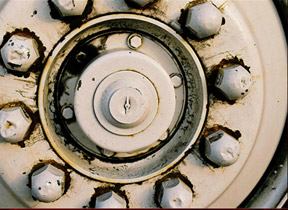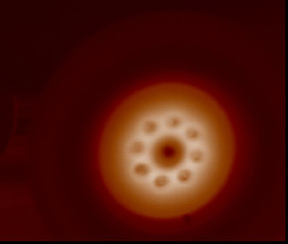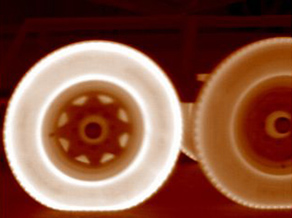By Christopher W. Ferrone
Bus fires continue to be a pervasive problem for our industry. Speaking before the recent Commercial Vehicle Safety Alliance (CVSA) safety summit in Washington D.C., I presented on the precise causes and origins of motorcoach fires, noting that insurance and government data indicate that across the United States two buses on average catch fire each day.
Not even the most conscientious operators can 100 percent prevent a fire from breaking out due to anomalies and circumstances totally out of their control. But in my mind, two fires a day is still unacceptable. I hope it is to the industry as well.
With diligent maintenance and recent technology, the bus and motorcoach industry can reduce the number of fires per year to a more acceptable level.
I came away from the CVSA conference believing we will further strive to reduce fires through proactive preventive measures such as critical inspections, along with new detection and notification methods that track the causes and triggering elements that lead to a fire.
My research indicates the greatest percentage of the root causes of fires relate to either wheel bearings and tire fires or to the alternator. Of the many other sources and causes, these two are the most pronounced and deserve an operator’s closest scrutiny.
Inspection
U.S. Department of Transportation (DOT) members at the conference understood my emphasizing pre/post trip inspection of the wheel bearing and hubcap oil level. I was particularly careful to note that many operators cannot view the hub cap oil level due to the fact that the sight glass has been obstructed by either paint (photo 1), or by a vanity chrome center cap (photo 2) completely covering the hubcap.
This discussion raised the suggestion to go so far as to make this a CVSA or DOT inspection item, giving the inspectors the authority to place a vehicle out of service if for any reason the hubcap sight glass does not allow the driver or inspector to see how much oil is in the hubcap and make any needed correction.
Detection
We posed questions in two separate areas to promote earlier detection. One, could OEMs develop and implement a sensor that could detect a hot wheel bearing early enough to alert the driver that a dangerous condition has occurred? Two, is technology available to detect an already hot wheel bearing or other thermal anomaly as the vehicle passes a controlled checkpoint such as a weigh station or toll plaza? Such information could be communicated to the carrier through identification using R.F.I.D. technology or law enforcement to notify the driver to stop.
From these questions two ideas moved forward during the conference. One suggestion was to redesign the ABS sensor to become temperature sensitive at a threshold that would indicate a hot wheel bearing well before it reaches the temperature critical enough to induce a fire, signaling the driver to stop the bus because there is a problem.
Such a sensor could be potted in a material that would melt at 300 degrees F. The sensor would fail and a warning device on the dash would indicate its status in plain sight of the driver. Anytime the ABS warning light comes on I recommend the driver immediately stop the vehicle and inspect the wheel-end. In some wheel-end designs an ABS warning light can indicate a bearing failure. On top of that, this new idea is to build in directly a fusible heat related ABS sensor or a dedicated sensor for wheel bearing/fire detection purposes. This could easily mount on the brake spider in close proximity to the ABS sensor location.
Next we discussed the dynamic method. International Electronic Machines (IEM) has developed a system that can determine temperatures and detect thermal anomalies of a heavy vehicle as it moves by the system at slow speed. Tested successfully in applications for roadside weigh stations, this system can detect hot wheel bearings (photo 3), hot brakes (photo 4) and overheated tires (photo 5), and could prove vital in detecting failed components on heavy vehicles as they move down the highway.
However, this technology is not cheap with mountains of logistics to address, such as where to place the sensing equipment to do the most good.
Notification
Zonar Systems, the company that developed the first electronic pre/post trip inspection process has an add-on in the development stages that will track and report to the carrier in real time some of the more prevalent triggers for fires.
Specifically, if the ABS warning light comes on, an electrical system failure due to a dead volt short, or the turbocharger boost pressure drops below expected levels, the Zonar communications system would report the occurrence to the carrier in real time using cellular technology and GPS. The Zonar system currently monitors the powertrain through the J-1939 communication link that is already onboard the vehicle.
Until all of this technology is fully developed and deployed, all operators need to continue vigilantly inspecting their vehicles as carefully as possible to reduce the mere possibility of a fire onboard.
Christopher W. Ferrone is president of Americoach Systems, Inc., Glenview, IL, an engineering firm specializing in transportation technology, analysis and engineering safety.





